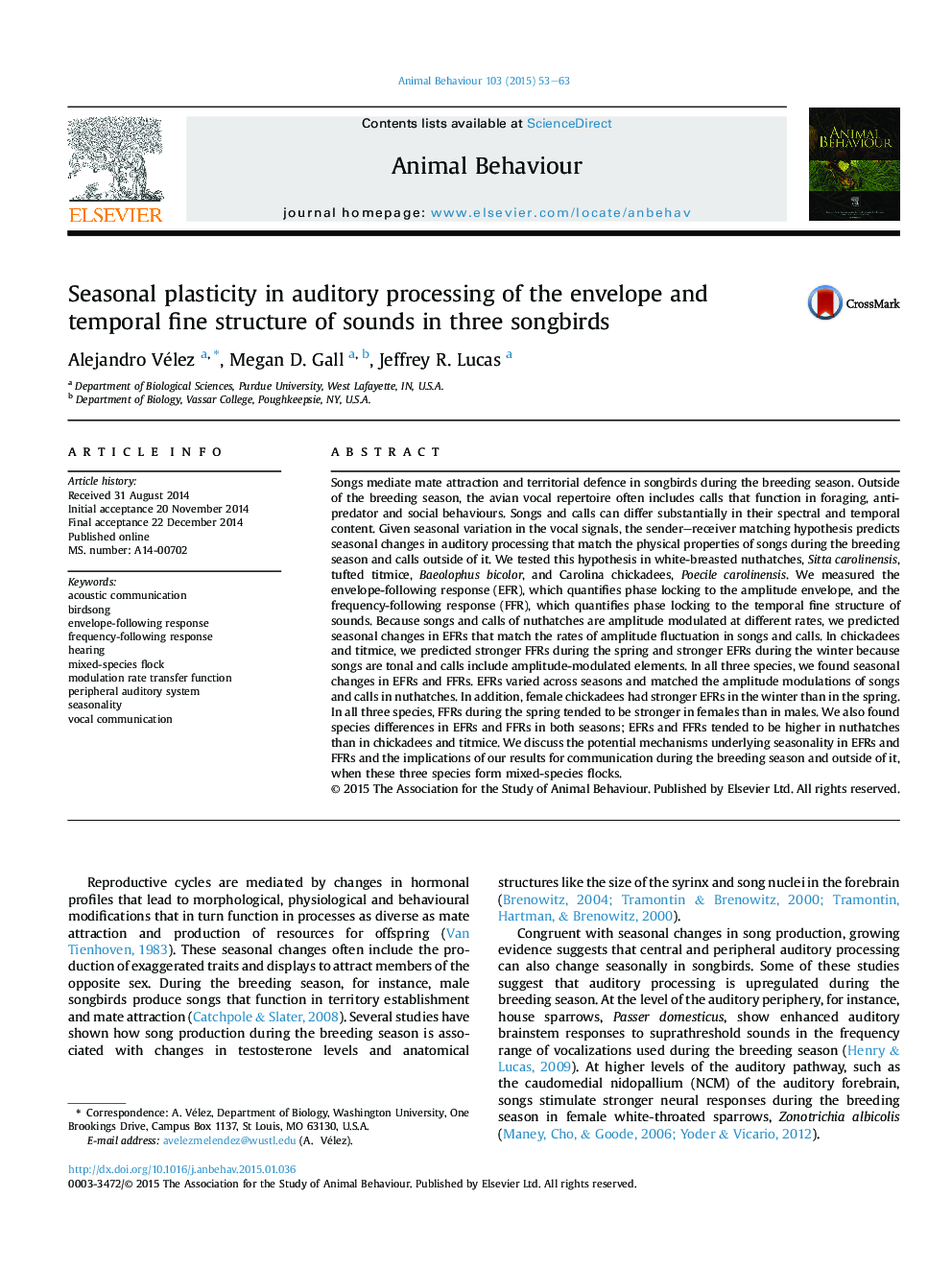| Article ID | Journal | Published Year | Pages | File Type |
|---|---|---|---|---|
| 8489902 | Animal Behaviour | 2015 | 11 Pages |
Abstract
Songs mediate mate attraction and territorial defence in songbirds during the breeding season. Outside of the breeding season, the avian vocal repertoire often includes calls that function in foraging, antipredator and social behaviours. Songs and calls can differ substantially in their spectral and temporal content. Given seasonal variation in the vocal signals, the sender-receiver matching hypothesis predicts seasonal changes in auditory processing that match the physical properties of songs during the breeding season and calls outside of it. We tested this hypothesis in white-breasted nuthatches, Sitta carolinensis, tufted titmice, Baeolophus bicolor, and Carolina chickadees, Poecile carolinensis. We measured the envelope-following response (EFR), which quantifies phase locking to the amplitude envelope, and the frequency-following response (FFR), which quantifies phase locking to the temporal fine structure of sounds. Because songs and calls of nuthatches are amplitude modulated at different rates, we predicted seasonal changes in EFRs that match the rates of amplitude fluctuation in songs and calls. In chickadees and titmice, we predicted stronger FFRs during the spring and stronger EFRs during the winter because songs are tonal and calls include amplitude-modulated elements. In all three species, we found seasonal changes in EFRs and FFRs. EFRs varied across seasons and matched the amplitude modulations of songs and calls in nuthatches. In addition, female chickadees had stronger EFRs in the winter than in the spring. In all three species, FFRs during the spring tended to be stronger in females than in males. We also found species differences in EFRs and FFRs in both seasons; EFRs and FFRs tended to be higher in nuthatches than in chickadees and titmice. We discuss the potential mechanisms underlying seasonality in EFRs and FFRs and the implications of our results for communication during the breeding season and outside of it, when these three species form mixed-species flocks.
Keywords
Related Topics
Life Sciences
Agricultural and Biological Sciences
Animal Science and Zoology
Authors
Alejandro Vélez, Megan D. Gall, Jeffrey R. Lucas,
